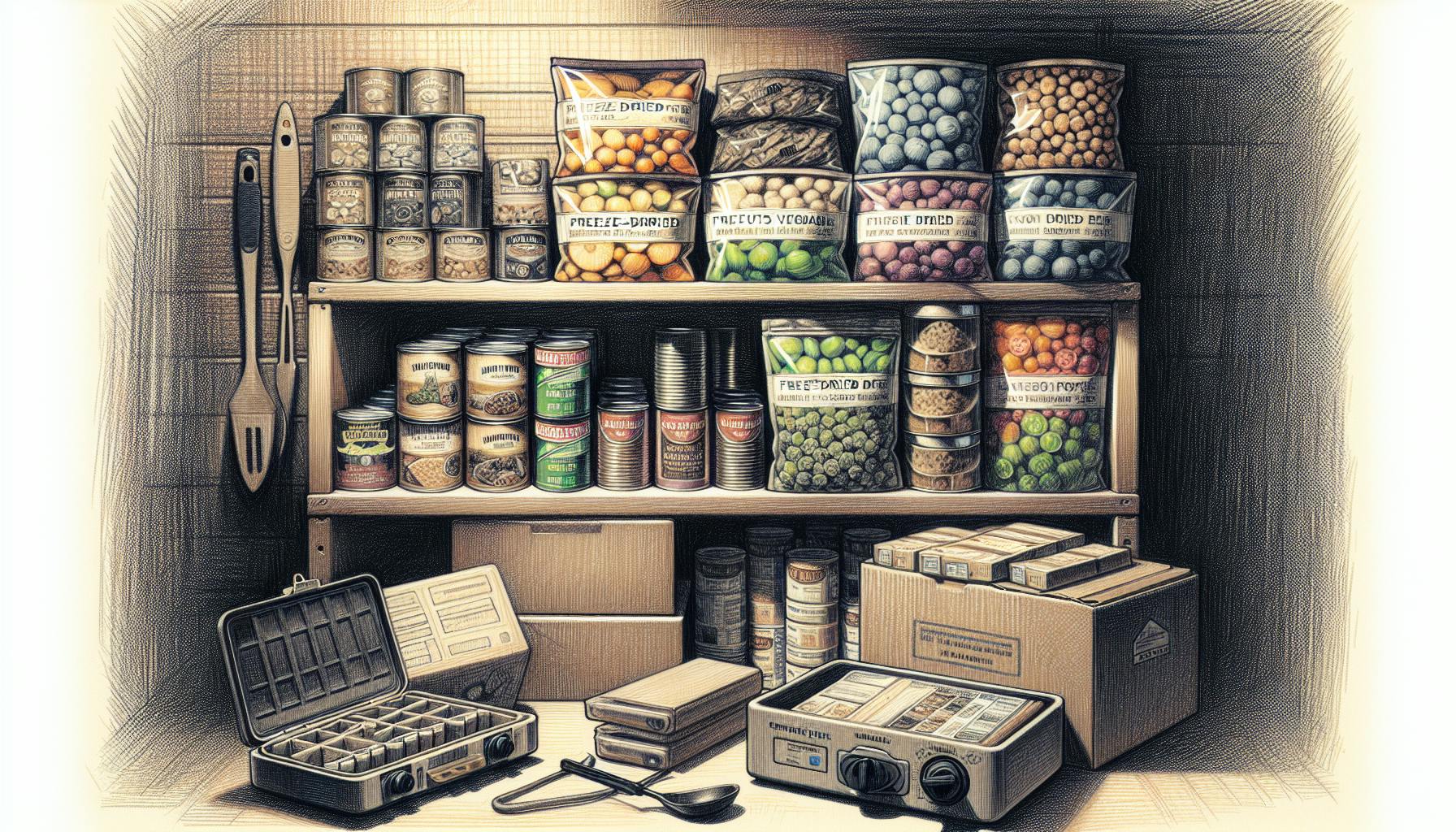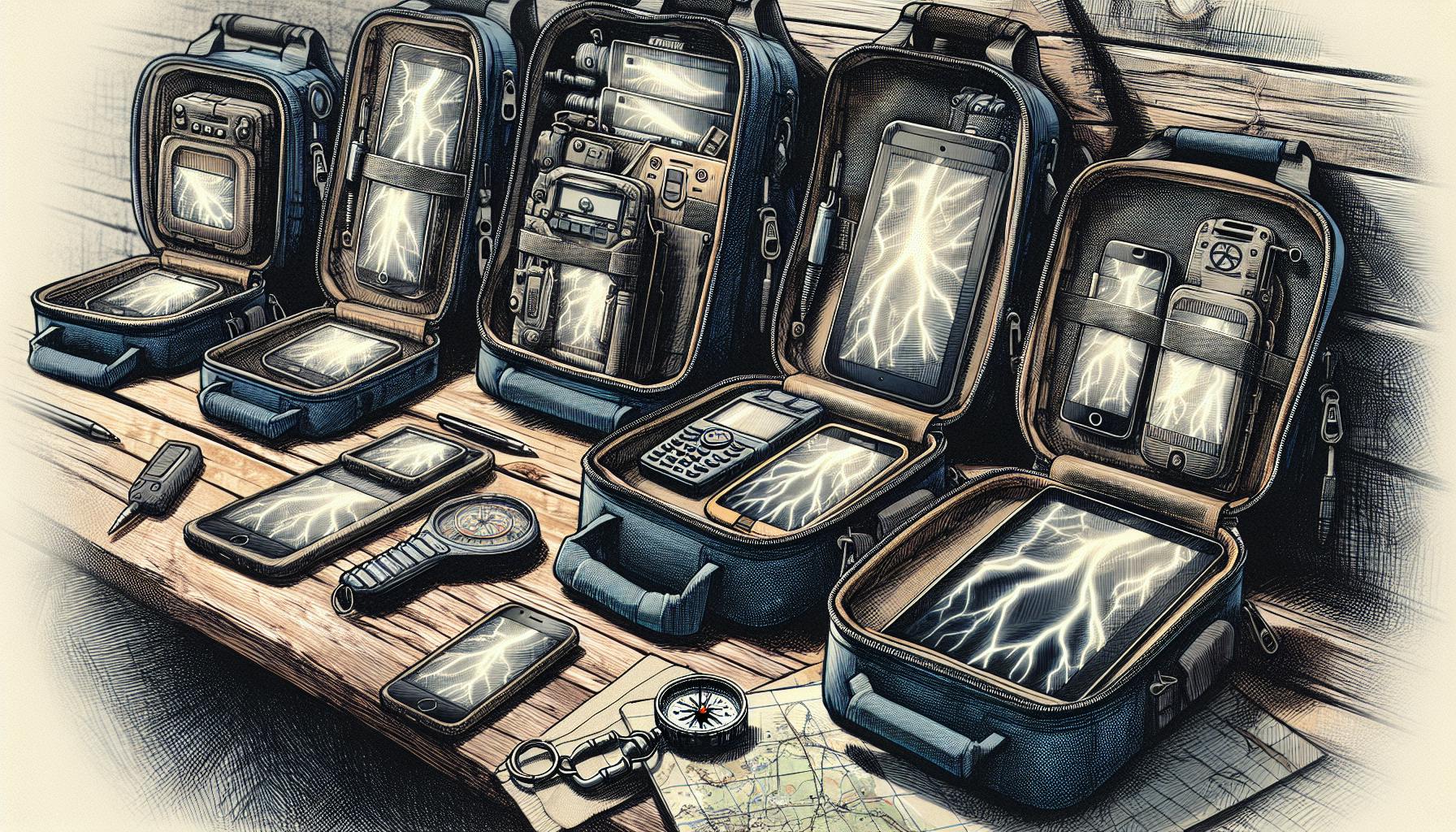When preparing a military survival bag, most will agree that balancing weight and necessity is crucial but challenging.
By understanding key principles for contents and construction, you can optimize your bag to be as lightweight yet capable as possible.
In this article, we'll explore ideal weight ratios, must-have gear, procurement tips, and examples of time-tested military survival kits to help you strike that critical balance of portability and preparedness.
Introducing the Military Survival Bag
A military survival bag is an essential piece of gear for service members. This article will provide tips on choosing the right bag and striking the perfect balance between necessity and weight.
Defining the Best Military Survival Bag
The best military survival bags are durable, high capacity, and ergonomic. They should be made of military survival bag ripstop nylon or other hardy materials that resist tears, abrasions, and moisture. Top military survival bags incorporate ergonomic shoulder straps, waist belts, and padding for comfortable long-term wear, even under load strain. Capacious interior and exterior pockets help organize critical tools and survival kits by priority. Companies like 5.11 Tactical and CamelBak make popular purpose-built military bags.
Assessing Your Needs
Consider the climate, terrain, and likely uses when selecting survival gear to asses your true needs. For example, military surplus Survival Kit packs for hot deserts would differ greatly from those intended for cool forests. Determine which items are essential in probable emergency scenarios. A high-altitude crash site calls for different best survival kits 2023 than being stranded at sea or in enemy territory. Understanding your needs allows focusing on items that justify the additional weight.
Choosing Quality Materials
The best military survival bag leverages durable, water-resistant textiles that stand up to field conditions without tearing, deforming, or allowing moisture inside. Ripstop nylon is standard, but advanced polymers and composite weaves now exist. Military bags also incorporate extra stitching, abrasion guards, and strength reinforcements at stress points prone to wear over time. These rugged materials come at a weight cost but help the pack last longer.
Exploring the U.S. Military Survival Kit Type II Class III
The U.S. Military Survival Kit Type II Class III sets the gold standard for military survival bags. Developed for sustained use in extreme conditions, this survival kit contains versatile tools and gear to equip soldiers for 72 hours of autonomous survival in the wild.
Contents and Capabilities
Specifically optimized for wilderness survival, the U.S. Military Survival Kit Type II Class III contains:
- Waterproof match case with 25 waterproof/windproof matches
- Signaling mirror
- Whistle
- Compass
- Fishing kit
- Snare wire
- Fire starter
- Water purification tablets
- Space blanket
- Wire saw
- Knife with sheath
With these components, the survival kit empowers users to meet critical needs for fire, shelter, water, food, navigation and signaling in a crisis scenario.
The inclusion of a fishing kit and snare wire facilitates self-reliance for procuring one's own food supply in the wilderness over an extended period. Water purification tablets enable soldiers to render natural water sources potable and safe for consumption.
The fire starter and windproof matches equip soldiers to rapidly build fires for warmth, cooking and signaling. The space blanket and wire saw can be utilized for improvised shelter construction.
The signaling mirror and whistle provide effective options for signaling friendly forces when lost or injured. Reliable tools for orientation like the compass further enable personnel to self-rescue by navigating back to safety.
Careful selection of versatile, rugged gear makes this survival kit widely useful for military personnel deployed in diverse environments worldwide. Its capabilities powerfully demonstrate why the U.S. Military Survival Kit Type II Class III represents an exemplary standard for military survival bags.
Customizing Your Survival Bag
Tailor your military survival bag to your specific branch, unit, region, and likely field scenarios.
Regional Considerations
When customizing your military survival bag, it's critical to consider the climate and terrain of the region you will be operating in. Tropical climates call for mosquito nets, water filtration systems, moisture protection for gear, and lightweight clothing. Alpine areas require insulation layers, mountaineering equipment, and foot traction devices. Desert environments necessitate eye protection, head coverings, hydration packs, and solar blankets. Prioritize equipment that will allow you to survive and operate effectively in your probable area of deployment.
Mission Parameters
The contents of your bag should directly correlate with your unit's assigned duties and probable combat zones. If conducting long-range reconnaissance operations, prioritize stealth equipment, observation optics, and secure communications. Air support units should carry specialized gear for survival following aircraft egress and evasion tactics. Account for likely exposure to enemy combatants based on historical mission data and pack equipment accordingly - signaling, first aid, protective suits, etc.
Adding a Tactical Survival Kit
Incorporate a tactical survival kit packed with gear specifically needed for combat and evasion scenarios. This may include camouflage equipment, two-way radios, firearms cleaning gear, specialized signaling devices, evasion maps, medical trauma equipment, and other mission-essential items. Waterproof containers are key for protecting these critical supplies. Standardize tactical gear across your unit so each member's survival kit interoperates for sharing vital resources if needed.
Personalizing for Your Needs
Beyond standard-issue gear, consider personalizing your bag with prescription medications, preferred snacks for morale, a journal, playing cards, or family photos to maintain sanity. These creature comforts can significantly bolster mental resiliency when deprived of everyday amenities during extended operations. Bring religious texts, medical implants, medications, or prosthetics critical for individual health and well-being.
Specialized Equipment
Certain special forces units or unconventional missions may require supplemental equipment not found in a typical survival kit. This may include night vision optics, surveillance cameras, communications devices, weapons accessories like suppressors or collapsible stocks, and other specialty gear. Confer with your unit commander to ensure you can carry and operate this supplemental equipment effectively.
Testing and Reassessing
Field test your survival bag during training exercises to determine effectiveness of your customized kit. Replace ineffective gear with better-suited equipment. Inspect bag contents routinely to check expiration dates, condition wear and corrosion, and ensure all electronics remain functional. Reassess contents as missions evolve to confirm your bag is tailored for likely scenarios. Maintain diligence continually optimizing your lifesaving survival provisions.
sbb-itb-b932644
Selecting from the Best Survival Kits 2023
As preppers, having the right survival kit is crucial to being prepared for any emergency situation. When selecting a military-grade survival kit, it's important to find the perfect balance between packing light and having all the necessary gear. The best military survival bags for 2023 excel in both portability and utility.
Top Contenders for 2023
This year brings several exceptional options for tactical and military survival kits that meet (or exceed) U.S. Military specifications. Here are some of the most notable:
The Grizzly Kit from My Medic offers an extensive range of survival tools while maintaining a compact, lightweight design. With emergency supplies for fire, food, first aid, navigation and more, it provides versatile preparedness. The bag's quality materials and thoughtful organization also make it a top choice.
For more rugged and heavy-duty options, the Tactical Series from Uncharted Supply Co. is hard to beat. Available in multiple sizes, these mil-spec bags feature waterproof construction and MOLLE webbing for attaching additional pouches or gear as needed. The advanced medical components especially make them ideal for austere settings.
Lastly, for those seeking customizable and modular preparedness, the Tenacious Tape Pro Survival Kit enables you to tailor components to your specific needs. The military-grade base kit meets Class III specifications for a 72-hour sustainment pack. You can then augment supplies based on your environment, activity and group size. This flexibility makes it our top overall pick.
By selecting from this year's most innovative survival kits, preppers can build the perfect bug out bag to meet their needs. Focus on balanced portability and utility as well as quality gear that will last. With the right survival tools in your pack, you can head confidently into the backcountry or any emergency knowing you have the essentials to sustain yourself until rescue.
The Value of Military Surplus Survival Kits
Military surplus survival kits provide exceptional value for preppers looking to prepare for emergency situations. These kits are designed by military experts to include versatile gear capable of addressing fundamental needs in crisis scenarios. Surplus versions make these robust, battle-tested survival kits affordable for average preppers.
Finding Quality Surplus Kits
When searching for quality surplus military survival kits, keep the following tips in mind:
Consider Actual Military Issue
Genuine military survival kits that were properly stored provide the ideal combination of field-proven gear and cost savings. Trusted online retailers of authentic military surplus offer exceptional deals on items like:
- U.S. Military Survival Kit Type II Class III
- Tactical Survival Kit (TSK)
- Various foreign military survival tins and packs
Opting for actual military surplus ensures your kit meets rigid specifications. However, some surplus dealers use the term loosely, so scrutinize sellers carefully.
Inspect Photos Closely
If unable to inspect a surplus kit in person before purchasing, carefully examine all posted photos for signs of completeness and condition issues. Some key things to look for:
- Seals: Ensure all sealing tape, shrink wrap, or zip ties appear intact. Broken seals suggest possible tampering or pilfering.
- Expiration dates: Bandages, medicine, and food rations have expiration dates. Ensure these are visible and not passed.
- Signs of damage/corrosion: Closely check containers and tools for dents, cracks, rust, etc.
The best surplus sellers provide multiple crisp, high-resolution photos from various angles. Avoid sellers with stock images or limited views.
Understand Any Flaws
Responsible surplus sellers will disclose any imperfections or missing items upfront. Consider minor flaws acceptable, but broken seals, incomplete medical components, or substantial corrosion should give pause.
Thoughtfully selecting your surplus military survival kit saves money without sacrificing essential preparedness. Just be sure to vet sellers thoroughly and understand any limitations before purchase. Proper inspection allows balancing weight, necessity, and cost when equipping your military survival bag.
Maintaining Your Survival Bag
Properly caring for your military survival bag ensures readiness when you need it most. Assemble a durable, watertight container that has ample space for all necessary survival gear. Use a hard plastic storage bin, ammo can, or water-resistant duffel bag. Secure the bag for transport by ground vehicle or aircraft. Tie down loose items and cushion more fragile components.
Storage and Transport
Choose storage solutions made of sturdy, weatherproof materials to protect contents. Hard plastic bins with gasketed lids seal out water, dust and debris. Metal ammo cans are extremely durable options constructed to safeguard ammunition from external elements. Water-resistant duffel bags have padded, removable dividers to organize gear. Secure the survival bag for transport in vehicles using straps or cargo nets to prevent shifting. For air travel, wrap more fragile items and fasten the bag so nothing falls out if overturned.
Routine Inspections
Inspect all survival bag contents at least quarterly. Check food expiration dates and replace anything past its prime. Test electronics, ensuring batteries hold adequate charge and radio/signaling devices function properly. Assess the condition of individual gear items, repairing or replacing anything damaged or worn. Document items used on training exercises or real-world missions so those survival supplies can be replenished.
Replacing Consumed Items
Carefully track survival gear utilized while on exercises or deployments. Note medical items, food rations, fire starters, signaling devices, or other equipment removed from the bag during use. Replenish those survival supplies as soon as possible upon returning from the field. Establish a checklist with quantity counts for each item in the bag. Perform an inventory, restocking consumed gear to maintain necessary redundancy.
Updating for New Threats
As conditions and protocols evolve over time, reevaluate survival bag contents to ensure optimal preparedness. Research the latest guidance from government agencies and survival experts on dealing with emerging threats like civil unrest, cyber attacks, nuclear events, climate change, pandemics or terrorism. Obtain any additional military survival gear needed to counter new risks. Stage items suited for likely scenarios to allow rapid access in an emergency.
Conducting Refresher Training
Review survival techniques and procedures regularly to keep skills current. Practice building shelters, starting fires, filtering water and administering first aid using only the contents of your bag. Conduct refresher training at least twice per year, individually or as part of a team. Thoroughly test all equipment under simulated emergency conditions. Identify any knowledge gaps to direct further study and preparation. Share best practices with colleagues to boost readiness across an organization.
Survival Bag Essentials Recap
Building an effective military survival bag requires carefully considering which items are absolutely essential for survival, while also keeping the overall weight manageable. Here are some key tips:
Prioritize the Essentials
Your bag should contain necessary items like a military-grade first aid kit, water purification tablets, fire starters, a lightweight stove and mess kit, high-calorie rations, signaling devices, navigation tools like a compass and maps, shelter materials like a tarp, and other mission-critical gear. Only include what you truly need.
Choose Lightweight Versions
Opt for lightweight, compact versions of important survival tools whenever possible. Modern materials technology offers effective options that minimize weight. For example, pack an emergency blanket instead of a sleeping bag.
Layer Clothing
Well-chosen clothing layers are lighter than bulky jackets and can better regulate body temperature. Include moisture-wicking base layers, insulating mid-layers, and a waterproof/breathable outer shell.
Balance Weight vs. Duration
The longer you need to survive, the more gear is required. Carefully tailor the bag's contents to the expected duration - a 24-hour assault pack requires less than one meant for 72 hours in the wilderness. Plan redundant items in case something fails.
With careful planning, you can build a military survival bag that contains all the mission-critical gear you need without overloading your carrying capacity. Focus on the essentials and lightweight options to strike the perfect balance.


